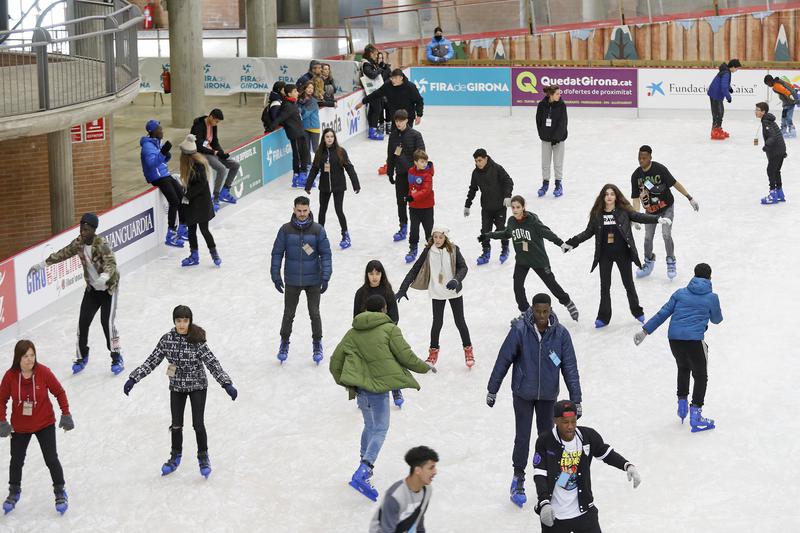The challenge for Catalonia's ice rinks operating amid drought
Vilafranca del Penedès will use water not safe for drinking, while Girona will make their rink thinner

The unprecedented drought is causing problems for many areas of life in Catalonia.
Restrictions on the use of water mean most people in the territory have a cap on how much water they can use daily, while there are also limits on agricultural, industrial, and recreational uses of this resource.
This poses particular challenges for ice rinks opening in Catalonia during the festive season.
To face this, traders in Vilafranca del Penedès have installed their ice rink using water that is unsafe for drinking, while in Girona, they have made the ice in their rink thinner to save on the amount of water being used.
Spokesperson for the Vilafranca Activa traders association, Xavier Lecegui, told the Catalan News Agency (ACN) that their rink with non-potable water "is almost unique in the sector."
The track uses 22,000 liters of ground water from municipal wells, which will be poured into the sewer when the campaign ends.
"We expect to increase the return due to the humidity that solidifies," he explains.
The ice rink in Vilafranca has been opening each Christmas season for almost 15 years and attracts around 11,000 skaters every year.
Vilafranca Activa considered installing a synthetic ice rink, but this was rejected as they found it would pollute far more emissions.
Thinner ice track
In Girona, in northern Catalonia, the ice rink will be thinner this year, reducing water use by 40%.
Of the 80,000 liters that would be used in normal circumstances, this Christmas it is estimated that only 48,000 litres will be used.
Coralí Cunyat, director of Fira de Girona events center where the ice rink is located, explains to ACN that the thickness of the ice sheet will be reduced by another centimeter this year, adding to the 3cm that were cut off the rink last year.
Cunyat says the water "in no way will be wasted" because when the track closes it will be returned to the network.
In Olot, regenerated water will be used and in Platja d'Aro, the water used will be extracted from a municipal well that is not suitable for consumption.
The pre-emergency drought phase does not specifically regulate whether or not ice rinks can be installed. The Catalan government leaves it in the hands of the local councils because, as the department of climate action explains, it is the councils who must assess "the need" to install rinks.
However, the Catalan government does clarify that installing an ice rink, under no circumstances, must mean "increasing the daily allocation set in the pre-emergency phase." In the pre-emergency phase, citizens are only allowed to use a maximum of 210 liters per day.